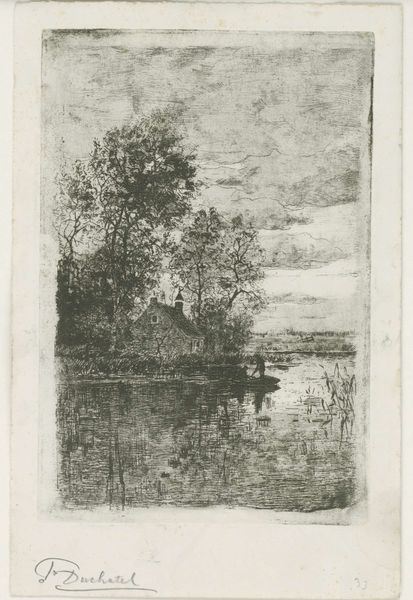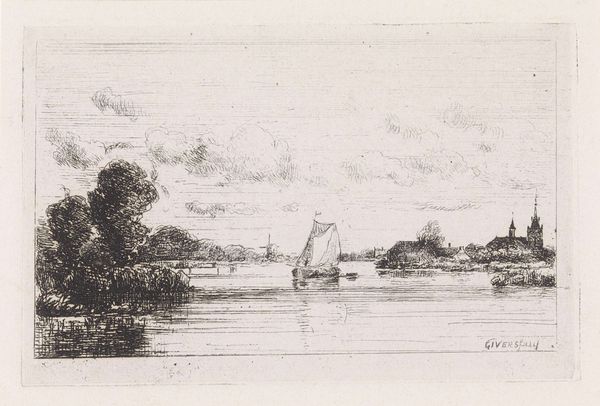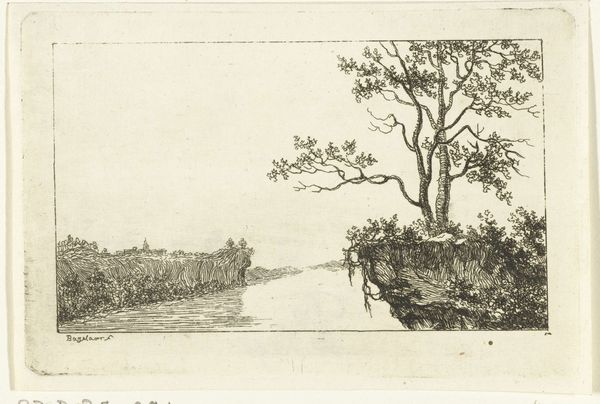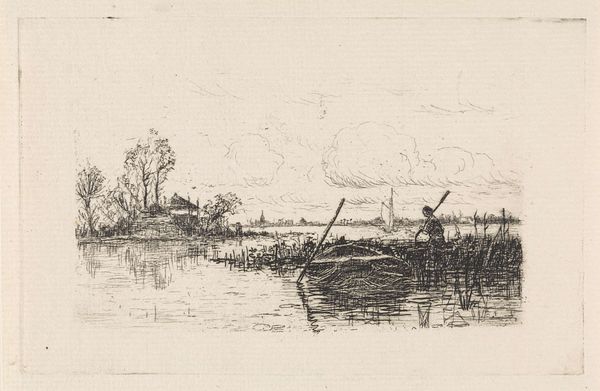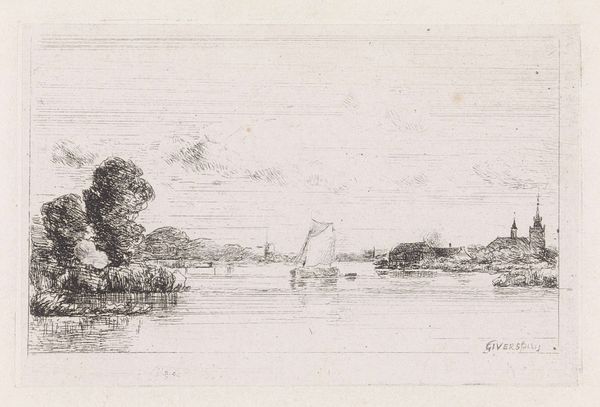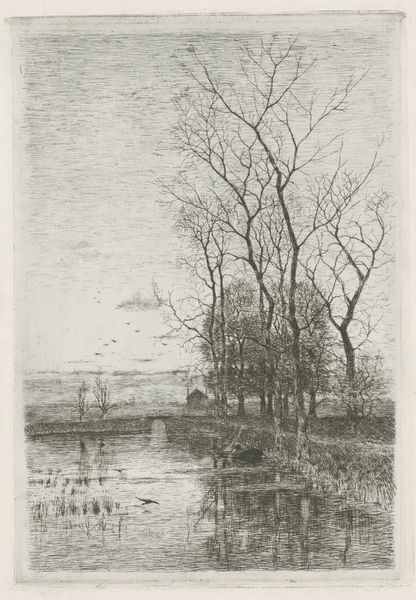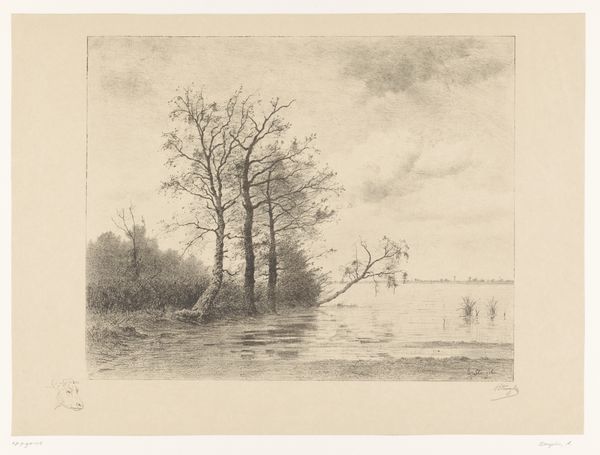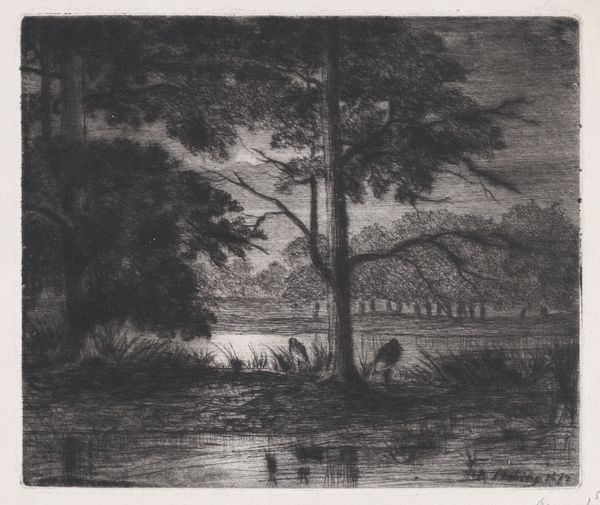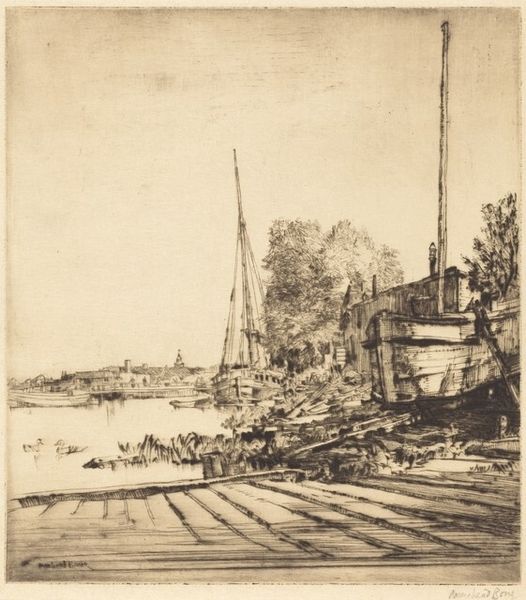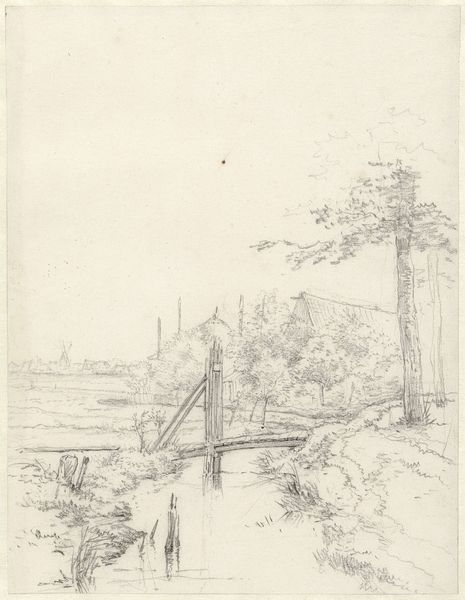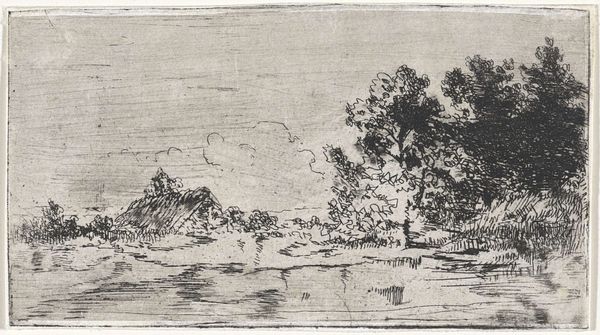
etching
#
etching
#
landscape
#
etching
#
line
#
cityscape
#
genre-painting
#
realism
Dimensions: height 180 mm, width 140 mm
Copyright: Rijks Museum: Open Domain
Editor: This is "River View with Two Ships and a Schuit" by Fredericus Jacobus van Rossum du Chattel, likely created after 1873, using etching. The delicate lines and subtle contrasts give it a peaceful, almost melancholic feel. What’s your perspective on this scene? Curator: It’s interesting to consider this etching within the context of late 19th-century Dutch art. Etching experienced a revival during this period, favored for its ability to capture nuanced atmospheric effects. Think about the rise of industrialization; images of serene, natural landscapes and waterways, like this one, offered a form of escapism for urban populations. The "schuit" itself represents local tradition amidst societal changes. Does this composition feel staged or authentic to you? Editor: It feels authentic to me. The reflections on the water, the detailed trees... it captures a specific moment. Do you think it idealized or realistically depicted the waterways? Curator: That's a vital distinction to consider! Realism emerged as a dominant force in art precisely when academic idealizations came into question. Rather than elevating nature, artists sought to present it as it truly was—sometimes mundane, often untouched by human hands. Consider this in light of access; art became less focused on the elites and more focused on accessible aesthetics. Editor: That makes sense! So, it’s less about showing a perfect scene and more about capturing a specific place in a way that resonates with the broader public. I hadn’t thought about it that way. Curator: Exactly. Artists also began seeing art through a more democratic lens and depicted mundane locations instead of glorifying exclusive settings, often allowing viewers a sense of belonging and understanding. What do you make of this artistic trend? Editor: I now recognize the artist’s decision to mirror ordinary places in etching during industrialisation in Netherlands and the way these depictions have had public resonance in socio-political discourses. Curator: Precisely. Art engages the public through nuanced forms!
Comments
No comments
Be the first to comment and join the conversation on the ultimate creative platform.
